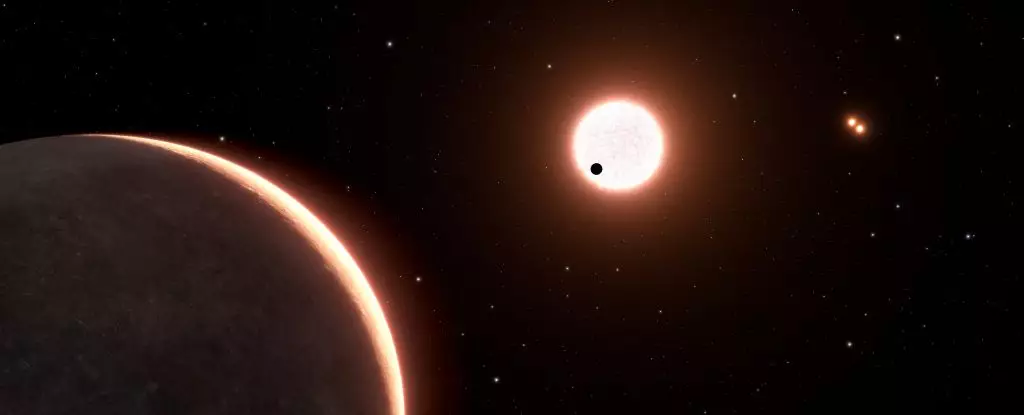Scientists in the United States have recently confirmed the existence of an Earth-sized exoplanet located just 22 light-years away. This exoplanet, called LTT 1445 Ac, orbits a small red dwarf star and is similar in size and composition to our own planet. While it is too hot to support life, studying LTT 1445 Ac can provide valuable insights into how planets form and evolve. In this article, we will explore the discovery of this exoplanet and the implications it has for our understanding of the universe.
LTT 1445 Ac was first identified using data from the TESS exoplanet-hunting telescope in 2021. However, due to difficulties in observing the exoplanet, astronomers initially could not be certain of its properties. The unique aspect of this system is that it consists of three gravitationally bound stars, making the observation and analysis more complex. When studying exoplanets, changes in the light of the host star are observed. But in the case of star systems, the presence of other stars also affects the light, complicating measurements.
To understand the properties of an exoplanet, two types of measurements are essential: transit data and radial velocity data. Transit data refers to the dips in starlight that occur when an exoplanet passes in front of its host star from our perspective. This data allows scientists to calculate the radius of the exoplanet. On the other hand, radial velocity data measures the gravitational tug of the exoplanet on its star by recording changes in the starlight’s wavelength. This data helps determine the exoplanet’s mass. By combining the radius and mass, scientists can determine the exoplanet’s density and infer its composition.
The transit data collected by TESS for LTT 1445 Ac was not well resolved, making it difficult to determine if the dimming was caused by the exoplanet fully eclipsing the star or merely grazing it. Radial velocity data provided confirmation of the exoplanet’s presence, but higher resolution transit data was needed for a more precise analysis. To achieve this, researchers turned to the Hubble Space Telescope.
Using Hubble’s Wide Field Camera 3, a team led by astrophysicist Emily Pass of the Harvard & Smithsonian Center for Astrophysics captured observations of the LTT 1445 system, specifically looking for transits of LTT 1445 Ac. While some of the dips in starlight were a result of the interactions between the three stars, the team successfully recorded the exoplanet crossing the face of its host star. This allowed for a high-resolution measurement of LTT 1445 Ac’s diameter. With this information, Pass and her colleagues were able to determine the exoplanet’s density, which closely resembles Earth’s density, suggesting it is a rocky exoplanet.
Although LTT 1445 Ac is too hot to support life, its proximity to Earth and its similarity in size and composition make it an exciting candidate for further study. Its host star, a cool and dim red dwarf, poses interesting possibilities for examining its atmosphere. By characterizing the exoplanet further, scientists can gain insights into the formation and evolution of Earth-like worlds in different system architectures. Understanding the likelihood of life emerging on other planets within our galaxy becomes an intriguing question to explore. Future missions, such as the James Webb Space Telescope, will contribute to this exploration by allowing scientists to study the atmospheres of transiting planets through spectroscopy.
The discovery of LTT 1445 Ac, the closest known Earth-sized exoplanet to our Solar System, opens new doors for studying the evolution of planets and the possibility of life beyond Earth. While this exoplanet may not host life as we know it, it provides a valuable opportunity to explore its atmosphere and gain a deeper understanding of the conditions necessary for life to emerge. By utilizing technologies like the Hubble Space Telescope and future missions like the James Webb Space Telescope, scientists are paving the way for groundbreaking discoveries in the field of exoplanet research.



Leave a Reply